what's old is new again
people and practices that bridge the gap between craft and the contemporary
It’s an exciting time to be in London right now. Design week is this week and my calendar has been booked with openings or drop-ins. Open House means I got to see inside the Isokon flats, albeit after a 2 hour queue in the rain, and Fashion Week starts soon (we’ll see how that goes this year).
This weekend, I went to a round table discussion for Grain Pile, an exhibition born out of collaboration between Max Radford Gallery (
) and timber brand Ercol. Six designers were tasked with “drawing inspiration from Ercol archives to reimagine wooden furniture in their own way”. The result was patchwork rocking chairs, hauntingly stark cabinets, and a wonderfully reimagined lounge-stool duo inspired by Denys Lasdun’s modernist icon Keeling House, of which I live quite close to.Where the panel was aimed for people “looking to start their own design practice” I was semi-apprehensive about attending as a digital (uncomplementary) designer. Perhaps a symptom of growing up in a tactile craft environment, where both my grandparents were craftspeople and worked extensively with wood, but the digital of it all feels dirty. I admire the physical nature of craft, and while I acknowledge my fortunate in having a creative-based job that pays my bills, it can be discouraging to sit at my laptop in an office chair when I know there’s things to be made.
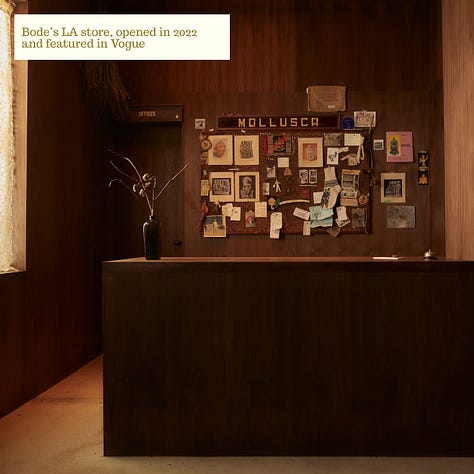
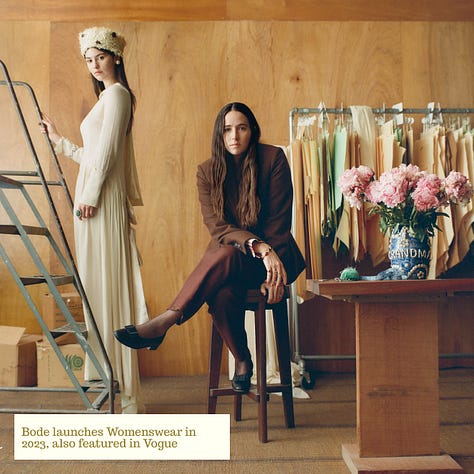
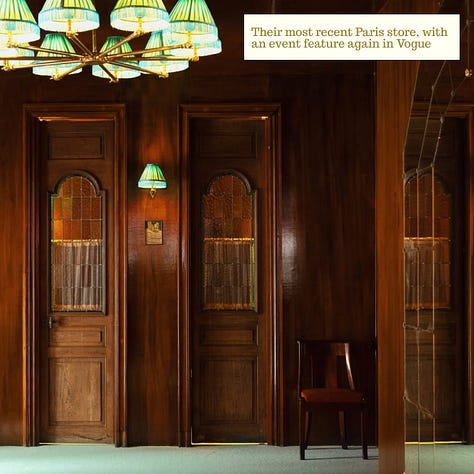
I am not alone in feeling this way. Everyone is throwing their two cents in about the trend cycle and algorithm of it all, but I think the past few years have been building up to this seismic shift towards appreciation for craft across fashion and interiors. If you use as a case study the frenzy surrounding Bode in 2022 (opened LA store), 2023 (launched women’s), and now 2025 (Paris store), you might recall the veneration for the craft of it all. Practices who champion American heritage and storytelling seem to offer a return to a “better time”, whatever that might mean. But rather, they present a commentary on the state of craft.
And I think we can all agree that “craft” today does not resemble “crafting” in a traditional sense. That probably died with the Industrial Revolution: factory lines de-skilled workers and instruments made the hand redundant. Or maybe it was when we switched from producing goods to selling objects (copies if I can be so gauche). And in industries where “making things” is central, we seem to have forgotten to protect the making of it all. The beauty in the slight of hand, the humanity in the error, both replaced by anonymity via fast fashion, trend cycles, and marketing gimmicks.
But I think what gets lost in the preservation of it all is the fact that the heritage principles we are seeking to restore were actually themselves centred around the idea of newness. New ideas, new materials, new forms.
gives a great case for protecting the past while advocating for the new: “some of the most exciting ‘Now’ things are really NOT NEW, but the newness comes from the thrill of ‘RETURNING TO’.”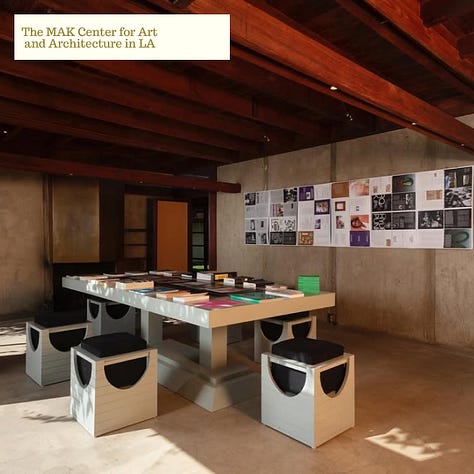
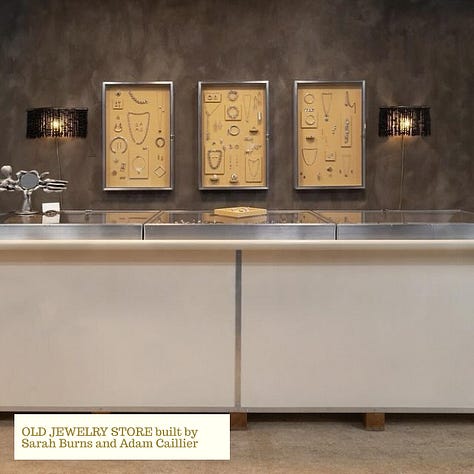
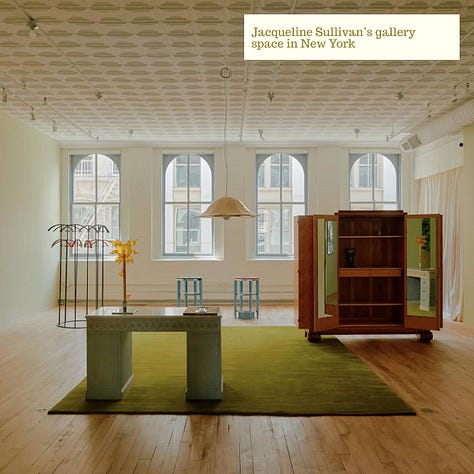
This is why, by in large the most interesting designers/practices/etc are the ones that manage to tastefully merge past and present. And no, I don’t mean on the “curation” side of things, or the faux-research moodboards. I’m not saying there’s not a place for them (or maybe I am) but there’s an approach one has to take to creating that respects the past rather than regurgitates “heritage” aesthetics.
I like the way
puts it: “the industry gave birth to a generation of pseudo-experts, consumers rather than future shareholders of the true craft of design.” And in pursuit of not acting like a pseudo-expert, I turn to his question of: Has an all-access pass to design led to greater appreciation of design objects, or more brazen knock-offs?What better people to answer this question than those that, thoughtfully meld past and present – or rather, that prove that appreciation is alive! That craft is not dead!
As I’ve entered into a place where I can more thoughtfully consider design objects and spaces, either from physical contact or simply the time spent learning about them, I’ve amassed a list of practices/people/makers that I admire for their historical context and contemporary. At risk of overwhelm, I’ve compiled a sparknotes of who and what I’ve had my eye on lately. Enjoy!
“antiquarian inquisitiveness” (aka curation)
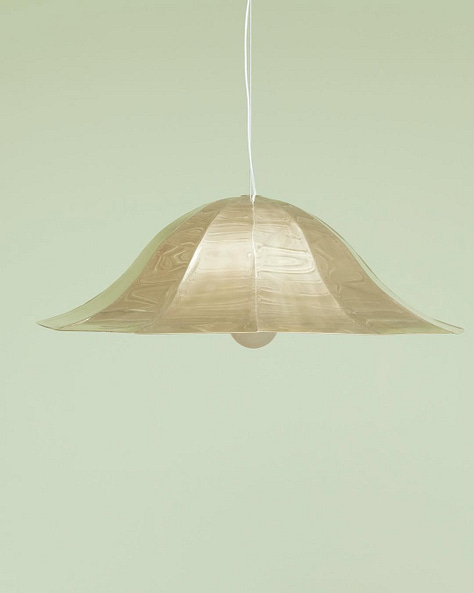
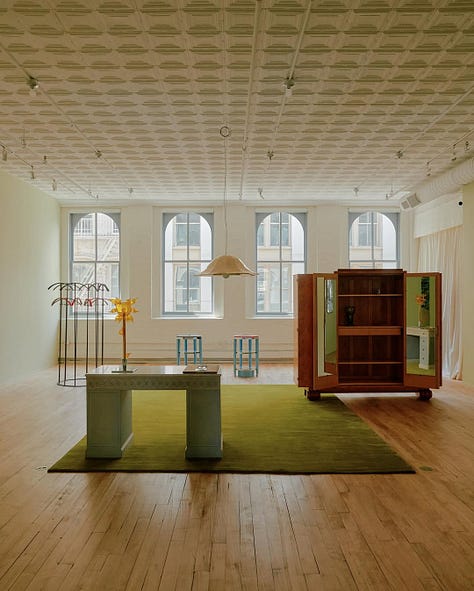
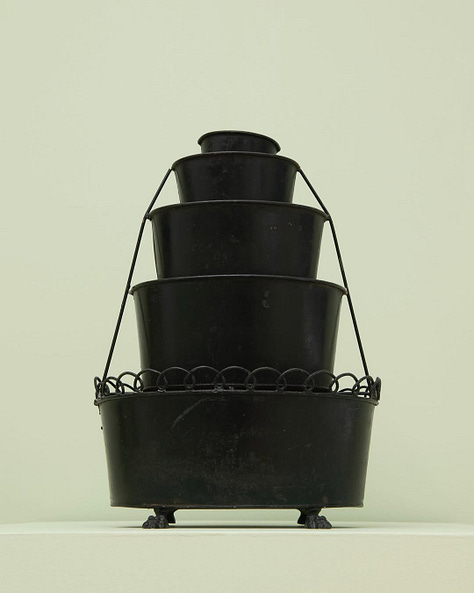
It’s gallerists like Jacqueline Sullivan who’s ethos of “antiquarian inquisitiveness” (how good!) resulting in a pairing of contemporary commissions with historic pieces. In three posts, she features a) Hannah Kuhlmann’s 2025 Sun lamp; b) a late 20th century table lamp; and c) Gala Colivet Dennison’s Sterling Silver Brooches, which explore the relationship between wear and convention. Just this week, she partnered with Bruises (named in celebration of the traces of time on well-lived furniture and objects), a Montreal-based design studio and gallery who operate their instagram in a now very common manner of showcase-meets-research project.
breathing new life into old homes!!
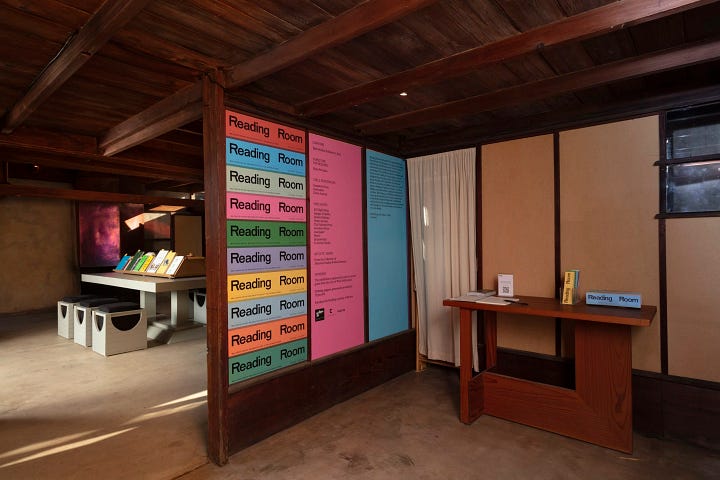
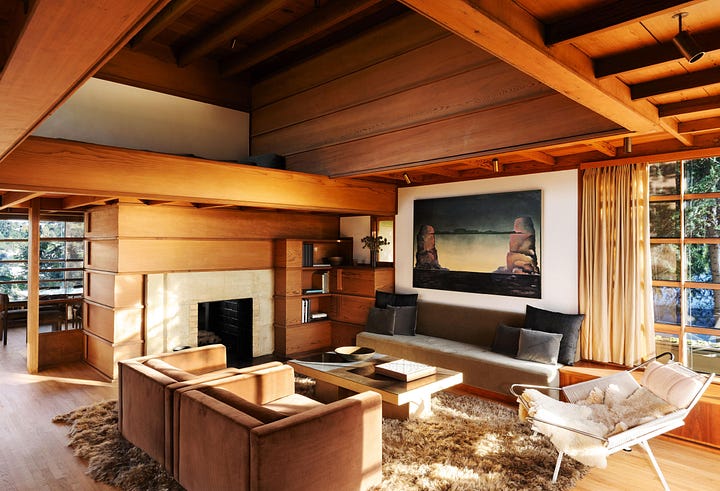
Gallery-slash-spaces like the Neutra VDL Studio and the MAK Center, which host site-specific works interest me. Since 1990, the Neutra house has been transformed into a “house museum and a platform for cultivating art, architecture, culture and education.” One of my favourite exhibitions was Built In which “engage the built-in architectural and historic elements of the VDL House” (old and new!!), and included pieces from A History of Frogs, LA Door, and Alex Reed. The MAK Center operates under a similar motive, hosting in the Schindler House exhibitions that include their own Residency program showcases (history and contemporary!) and frequently works with curators, artists and architects. It’s this conscious and collaborative approach to historical architecture that doesn’t just involve taking pictures and aimlessly walking around places you saw on instagram…
spaces for working living
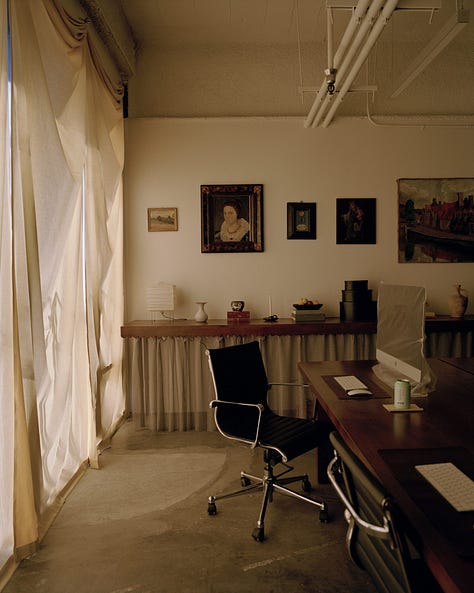

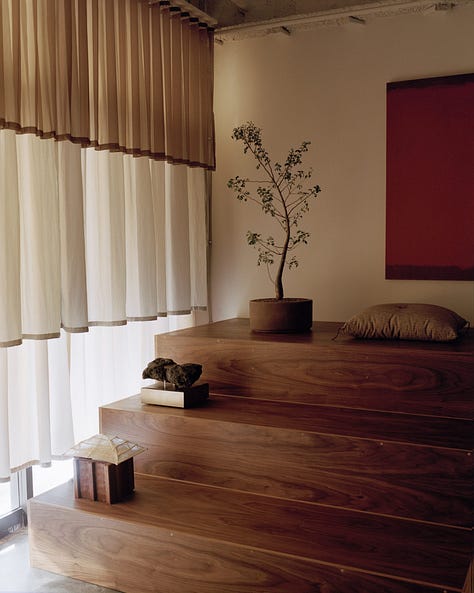
Or practices like Aunt, who did
’s office in March, housing “artwork and objects spanning multiple centuries and geographical origins” in conversation with objects and artworks by friends/collaborators, like Waka Waka, Lily Clark, and Bianca Augustine. More recently, you’ve likely seen their work for Cafe Tondo (in collaboration with aforementioned MWS). The building combines inspiration from its history as a tire shop, massage parlour, and Oriel with art from Mouthwash’s Abraham Campillo’s personal collection.Another favourite, Husband Wife, “finds balance in the tension between nostalgia and modernity” Shelves inspired by Charlotte Perriand’s 1970 Air France lounge, nods to 1980s/90s loft architecture with Alain Richard lamps, and office spaces inspired by ’70s sci-fi and French Modernism all contribute to a considered body of work. Or Sarah Burns, who recently designed and built her own jewelry store alongside Adam Caillier to “honor the pieces that made the original store so special but to bring them into a new space”.
if you find yourself in London, go to:

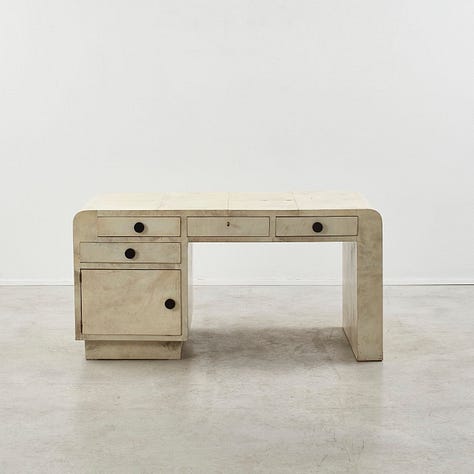
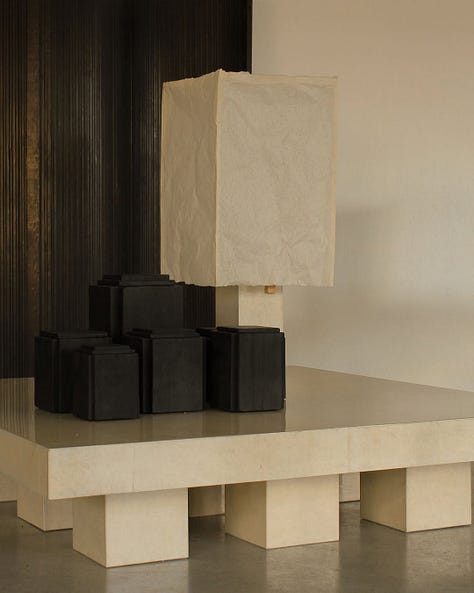
There’s no shortage of interesting collaborations, gallery spaces, and shops that curate a range of old and new. Spazio Leone, with a forthcoming Riccardo Dalisi exhibition. I went to Beton Brut’s Marsura show and enjoyed speaking with founder Sophie Pearce and Marsura’s son himself about the collaborative and organic nature of the retrospective. The Peanut Vendor, where earlier this year I saw a show for London Craft Week. Aelfred, “London's largest warehouse for mid-century Nordic homewares” with some truly special pieces. Monument which features lesser-known designers. And M. Kardana focused on 20th century design alongside contemporary artists.
That’s it for me. If you made it this far thank you, and I’m glad to know there are other people as passionate (crazy) as I am. If you are, let’s chat!

